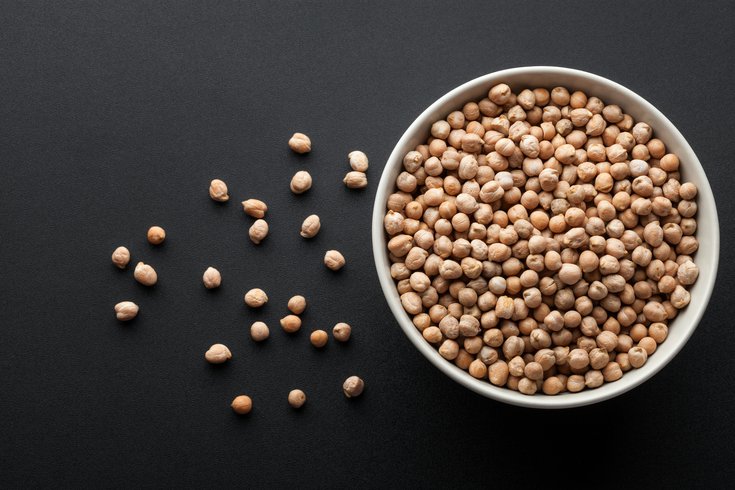
February 12, 2021
 Source/Image licensed from Ingram Image
Source/Image licensed from Ingram Image
Chickpeas are a high protein, high fiber and gluten-free alternative to regular pasta.
The COVID-19 pandemic is affecting every aspect of our lives — including grocery shopping accessibility and our everyday meals. When ordering groceries online, or shopping in stores (with a mask), panic bulk buying is still making some foods difficult to find.
Suddenly what’s for breakfast, lunch and dinner can be a struggle. Add in the combination of stress and boredom some us face every day, and our diets can become disasters.
There are still many people who still need to follow or continue to follow a physician-prescribed diet. For instance, if you have just been diagnosed with celiac disease you will be required to follow a strict gluten-free diet. If you have diabetes or high cholesterol, now is the time to get these conditions under control through diet. If you have inflammatory bowel disease or cancer, you may need extra calories and a special diet to keep your nutritional status optimum and symptoms at ease. If your irritable bowel syndrome is causing bloating, diarrhea or constipation, your gastroenterologist may recommend a low FODMAP or lactose-free diet. The list can go on and on.
Fortunately, telehealth visits with registered dietitian nutritionists are now covered by insurance companies. RDNs will ensure that your nutrition is delivered in the safest way. They will assess the nutritional demands taking into account your age, gender, budget and other underlying medical conditions. They will be your personal link for accurate, up-to-date, evidence-based nutritional information.
Here are just a few cost-effective, healthy balanced, gluten-free, lactose-free food options to maximize nutrients with less food waste:
• Fruits and vegetables (fresh or frozen) can be added to soups, stews or smoothies.
• Utilize meat, poultry and fish (fresh or frozen). Make a large batch of meatballs from ground meat, chicken or turkey and freeze half. Leftover chicken or fish can be made into salads or added to pasta dishes.
Emily Rubin, R.D.
• Use eggs to create a frittata with fresh or frozen veggies. Hardboiled eggs are a protein-packed snack.
• Consider lactose-free alternatives: Lactose-free milk actually has a longer shelf life than regular milk. Plant-based milks like soy and pea milk are higher in protein than almond milk and can be added to smoothies and made with oatmeal.• Hard cheeses, like cheddar and parmesan, are naturally lactose-free and can be added to salads or eaten as a snack with fruit.
• Greek yogurt can be made into a parfait with fruit, nuts and granola or added to a smoothie.
• Canned beans, such as chickpeas and lentils, can be made into chili, soups and roasted or added to salads.
• Tofu or meatless crumbles — both high protein, vegan choices — can be added to stews, tacos or made into chili.
• Plant-based pasta (chickpea, lentil) is a high protein, high fiber and gluten-free alternative to regular pasta. Leftovers can be turn into a pasta salad.
• Make use of healthy fats. Use avocados to make guacamole or add them to whole grain or gluten-free bread. Nuts and nut butter can be added to yogurt, veggies and fruit or included in a smoothie.
• Use pancake mix (regular or gluten free) to make muffins by adding yogurt, nuts or fruit.
 ./.
./.